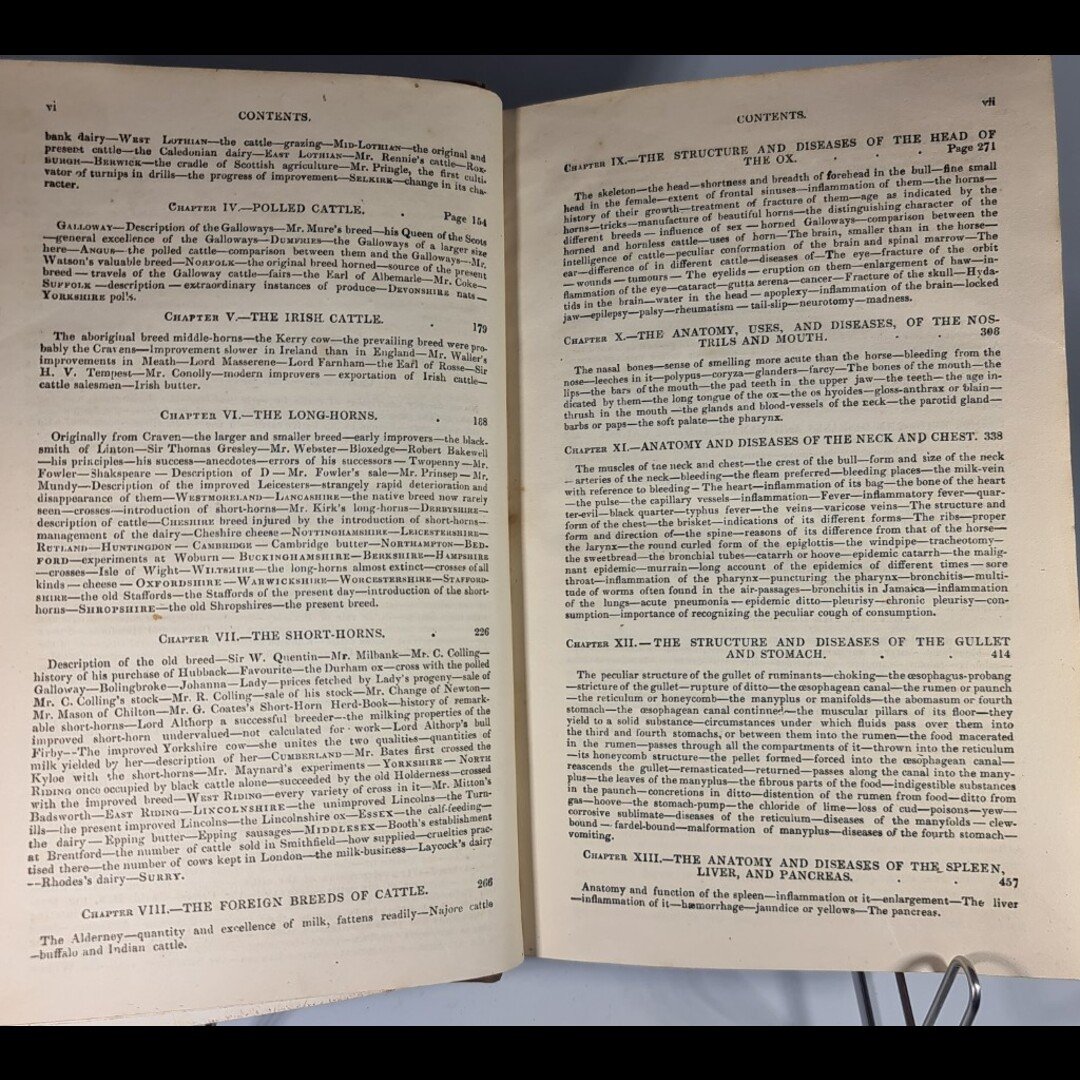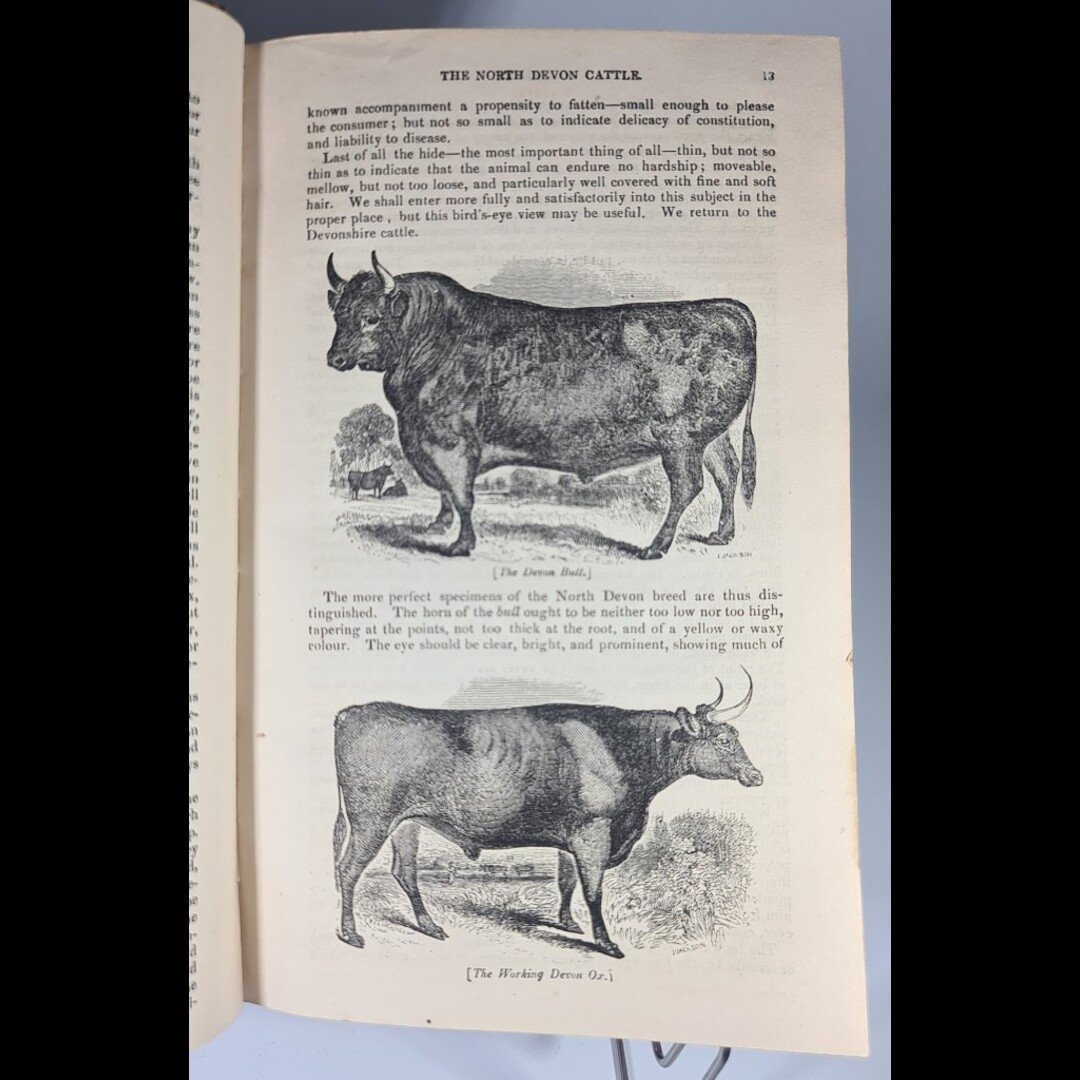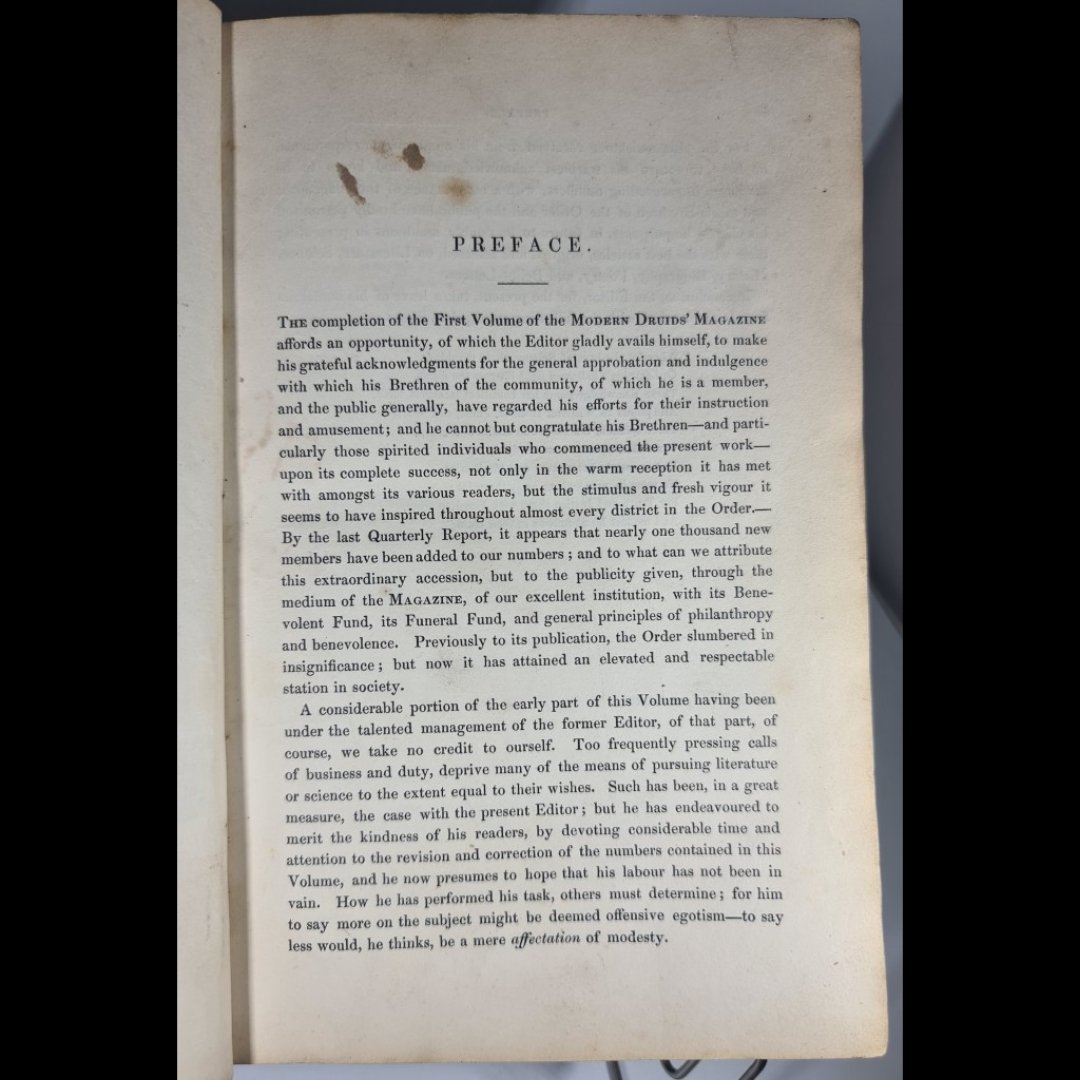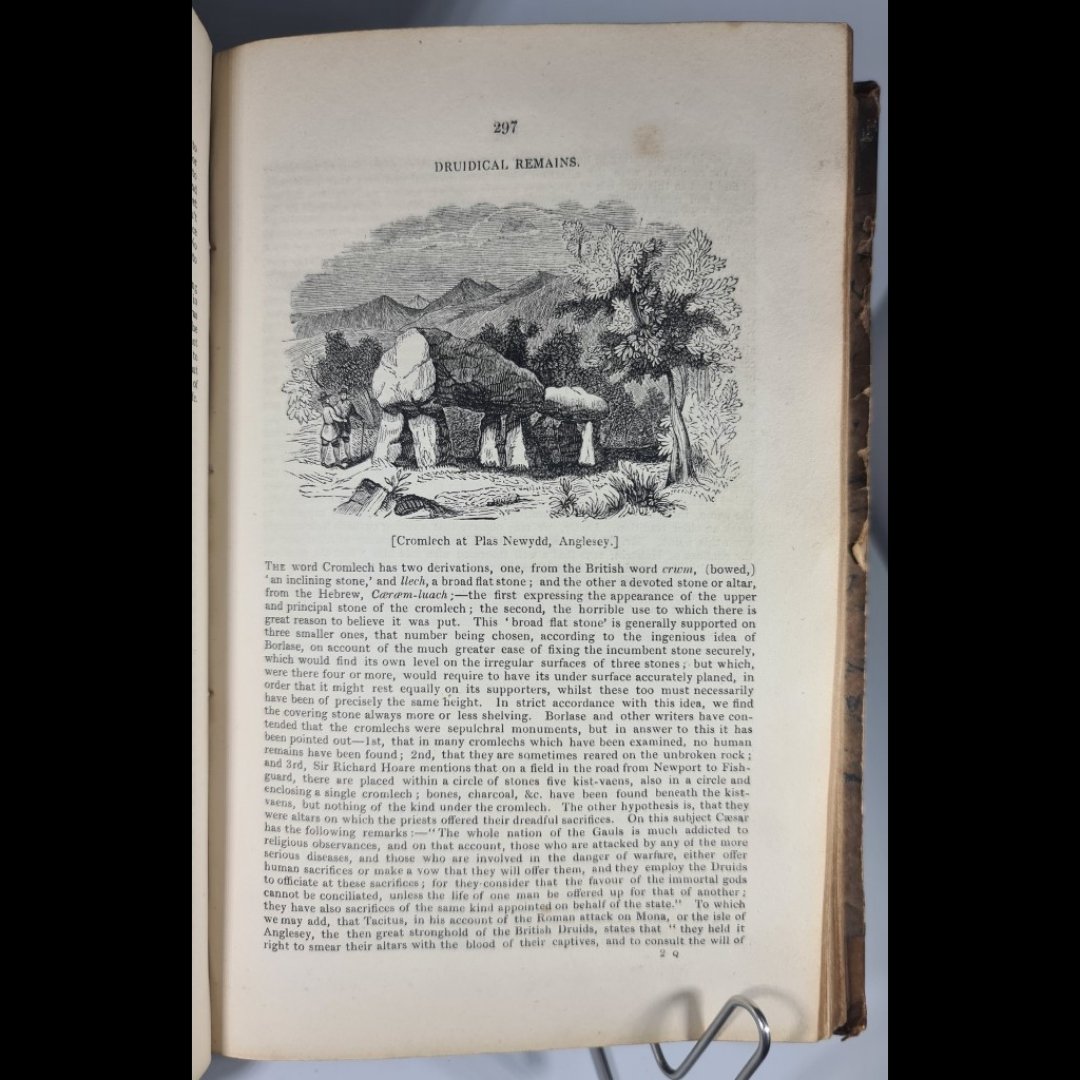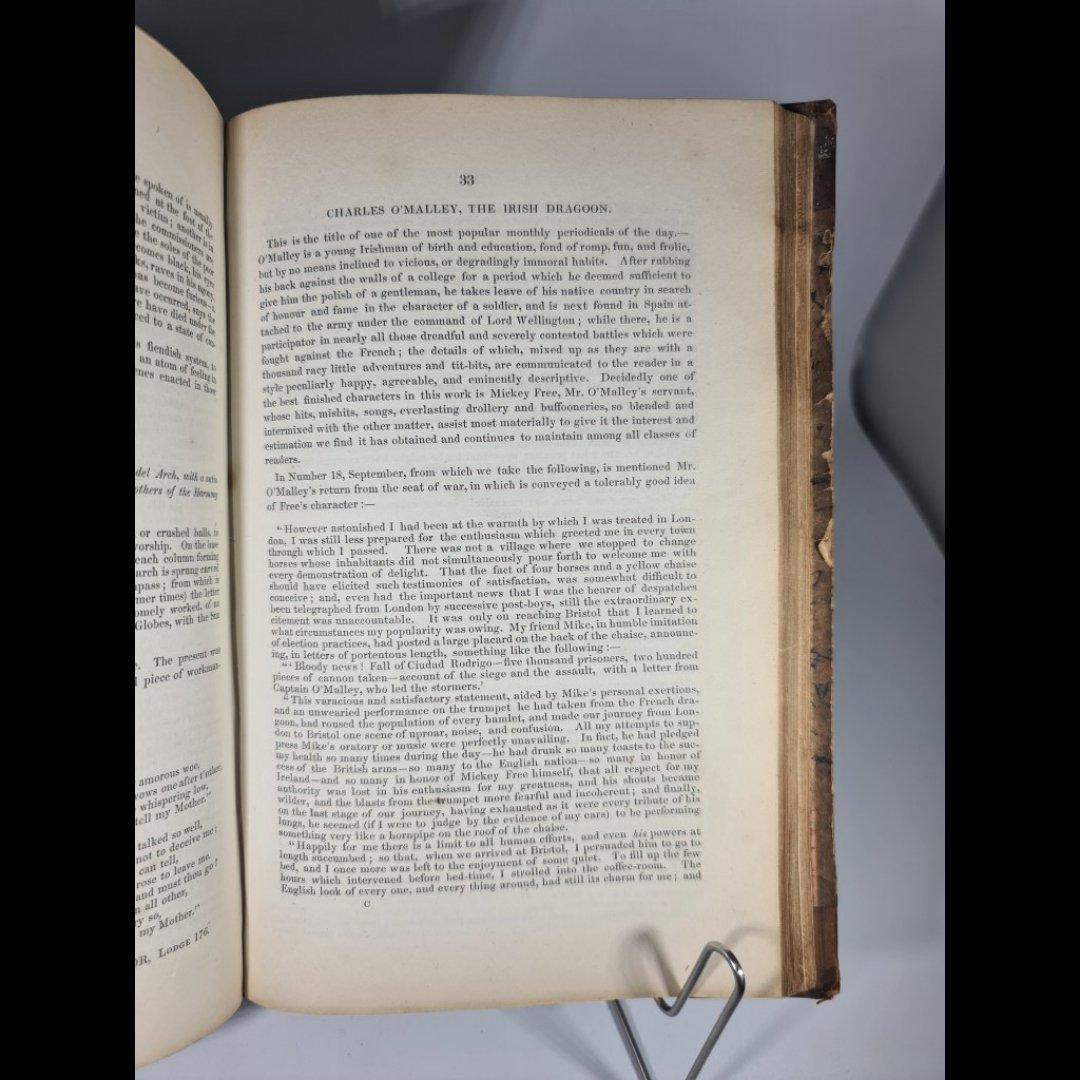 Image 1 of 28
Image 1 of 28

 Image 2 of 28
Image 2 of 28

 Image 3 of 28
Image 3 of 28

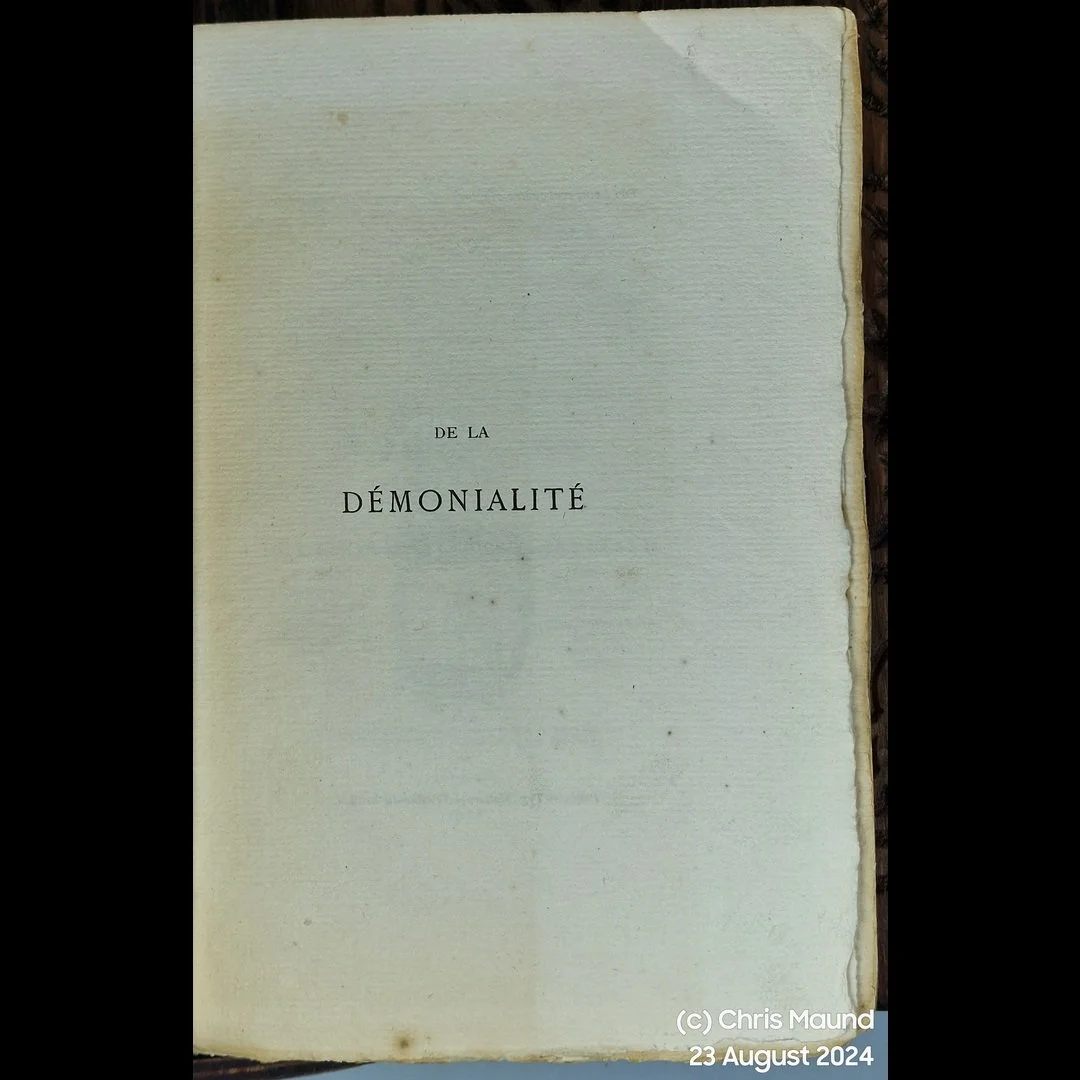 Image 4 of 28
Image 4 of 28

 Image 5 of 28
Image 5 of 28

 Image 6 of 28
Image 6 of 28

 Image 7 of 28
Image 7 of 28

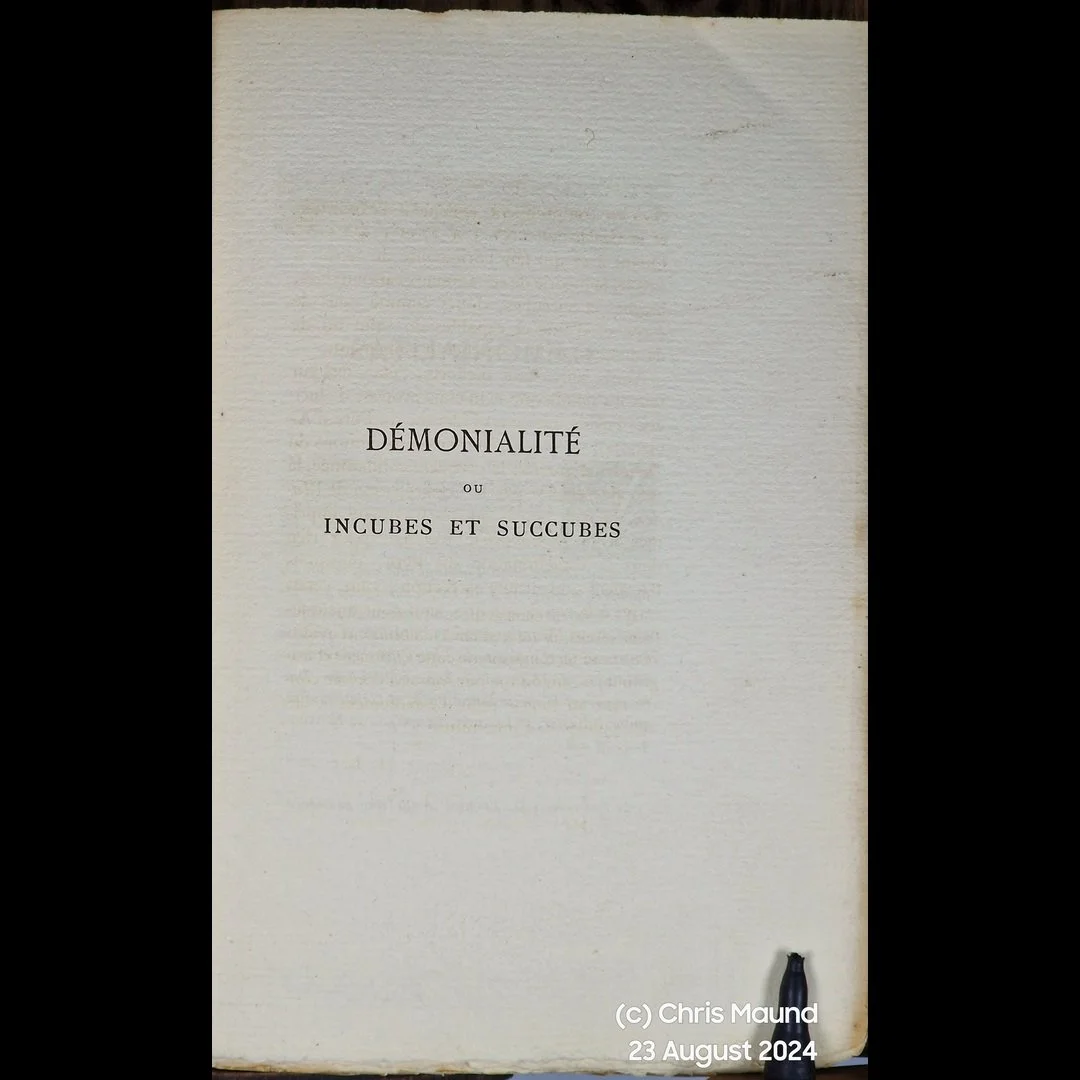 Image 8 of 28
Image 8 of 28

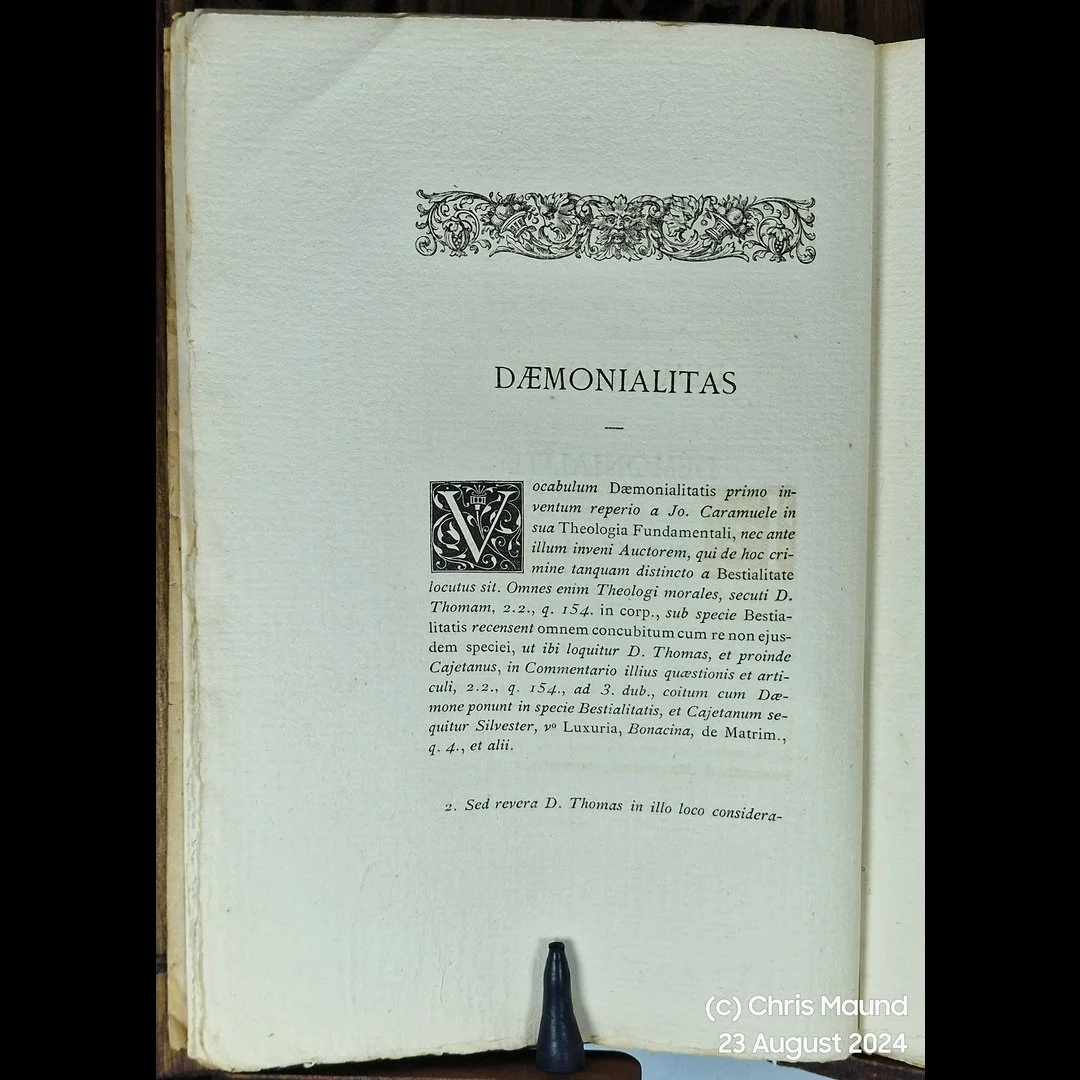 Image 9 of 28
Image 9 of 28

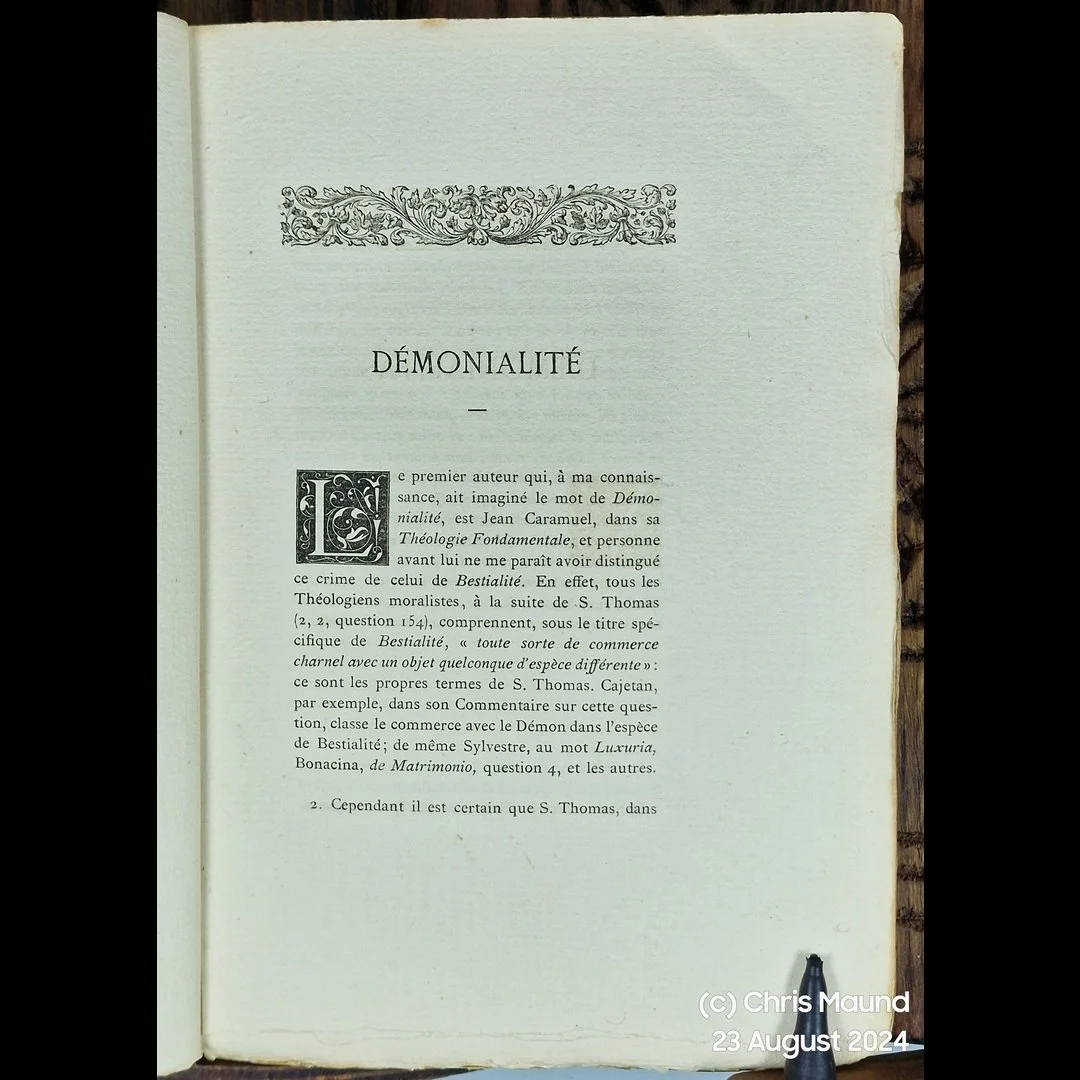 Image 10 of 28
Image 10 of 28

 Image 11 of 28
Image 11 of 28

 Image 12 of 28
Image 12 of 28

 Image 13 of 28
Image 13 of 28

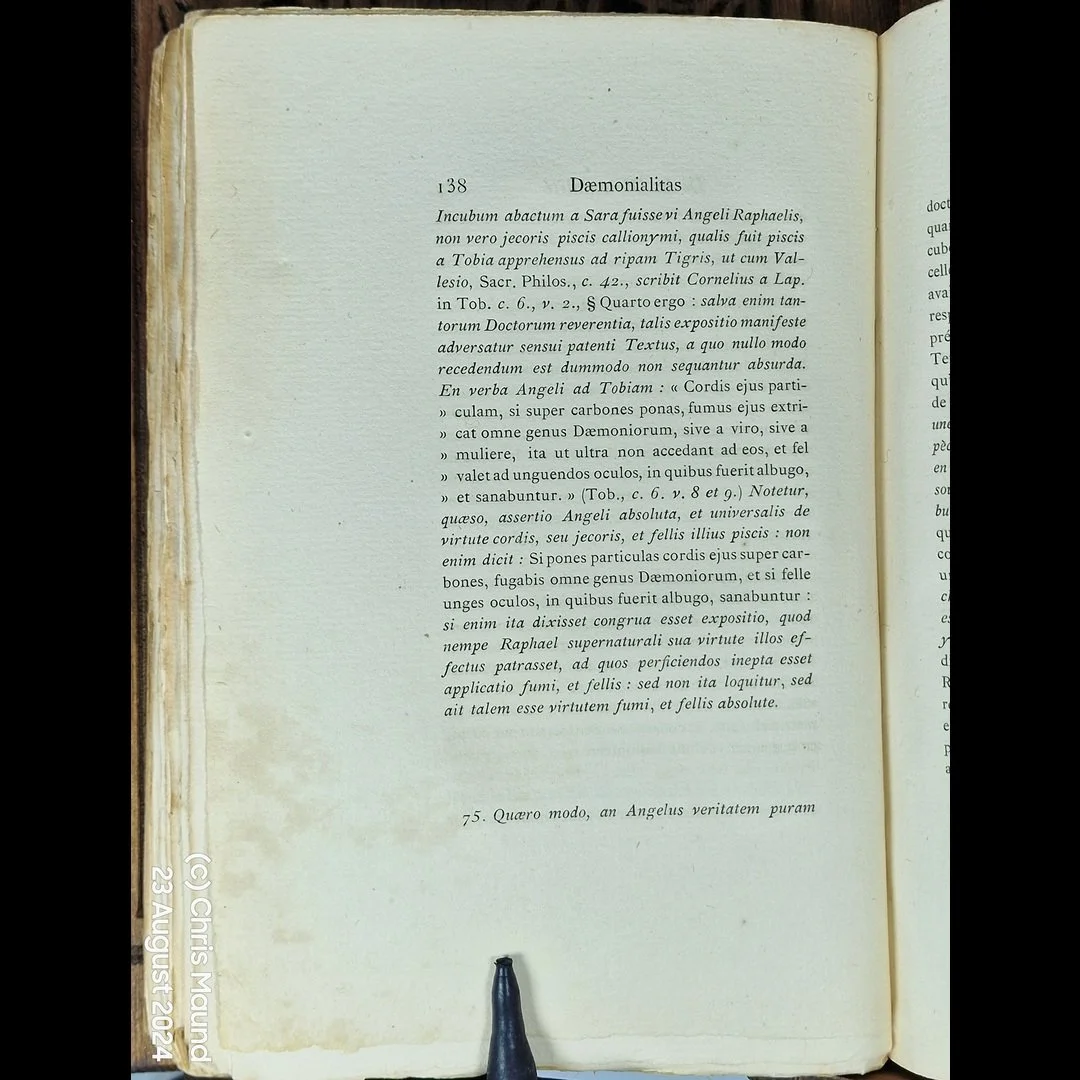 Image 14 of 28
Image 14 of 28

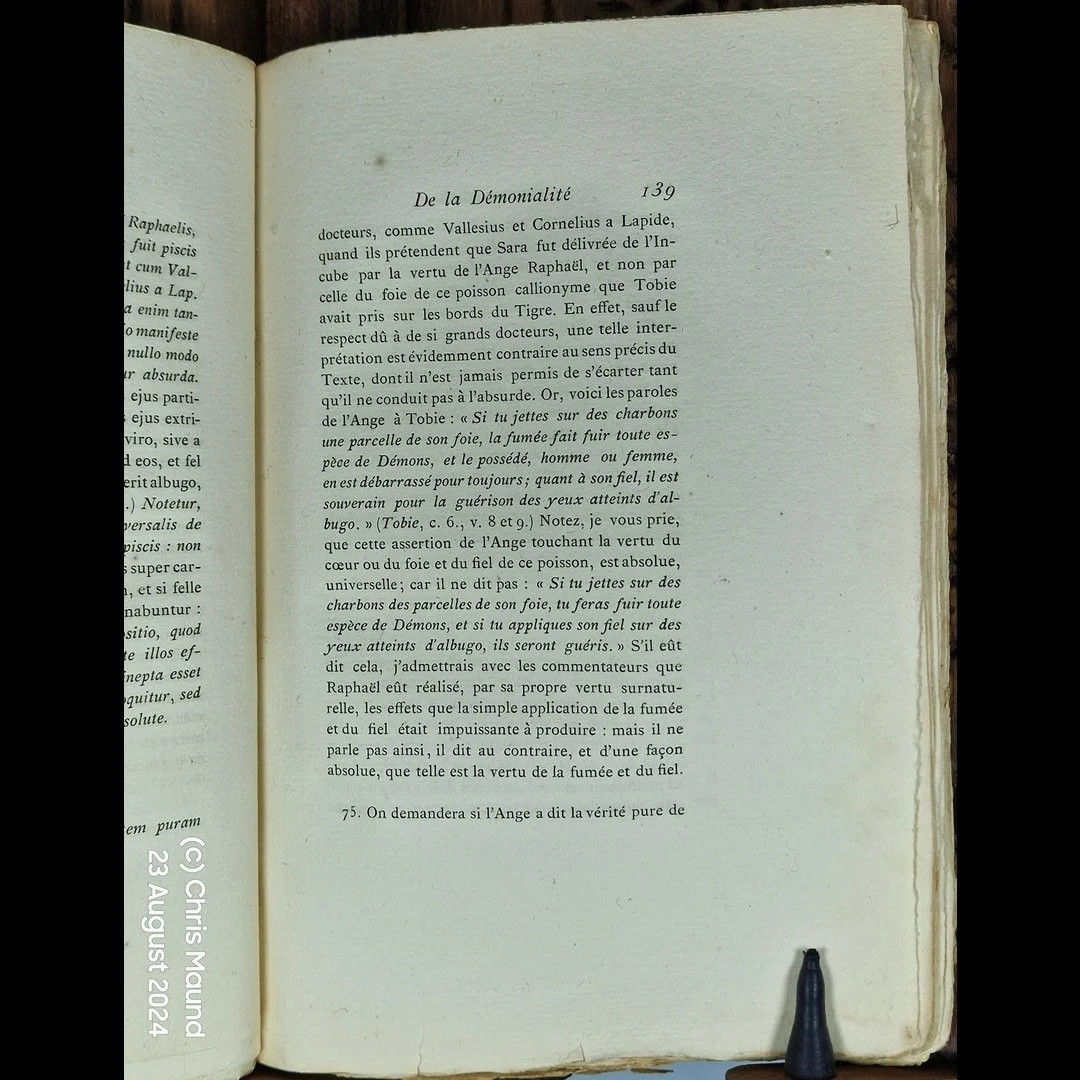 Image 15 of 28
Image 15 of 28

 Image 16 of 28
Image 16 of 28

 Image 17 of 28
Image 17 of 28

 Image 18 of 28
Image 18 of 28

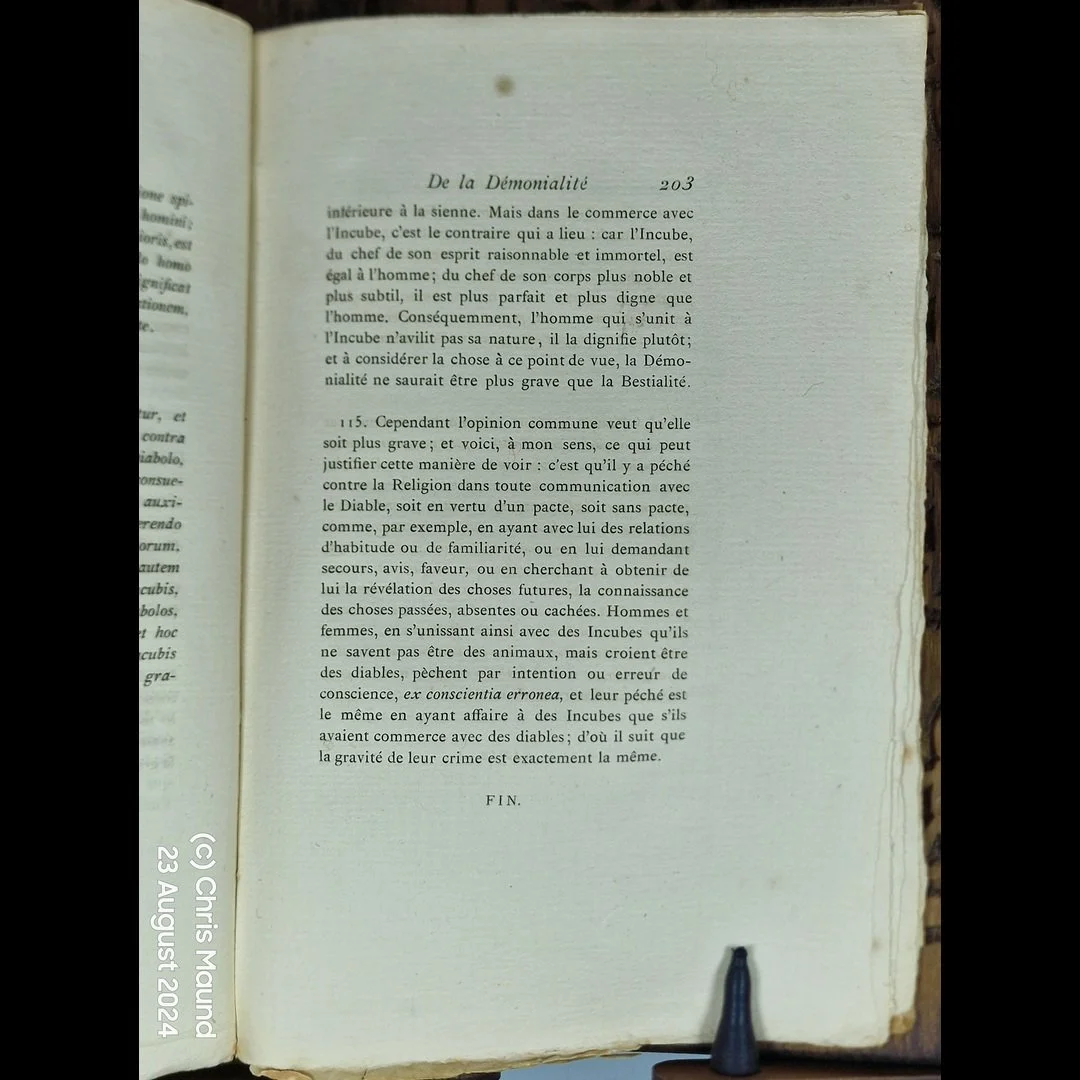 Image 19 of 28
Image 19 of 28

 Image 20 of 28
Image 20 of 28

 Image 21 of 28
Image 21 of 28

 Image 22 of 28
Image 22 of 28

 Image 23 of 28
Image 23 of 28

 Image 24 of 28
Image 24 of 28

 Image 25 of 28
Image 25 of 28

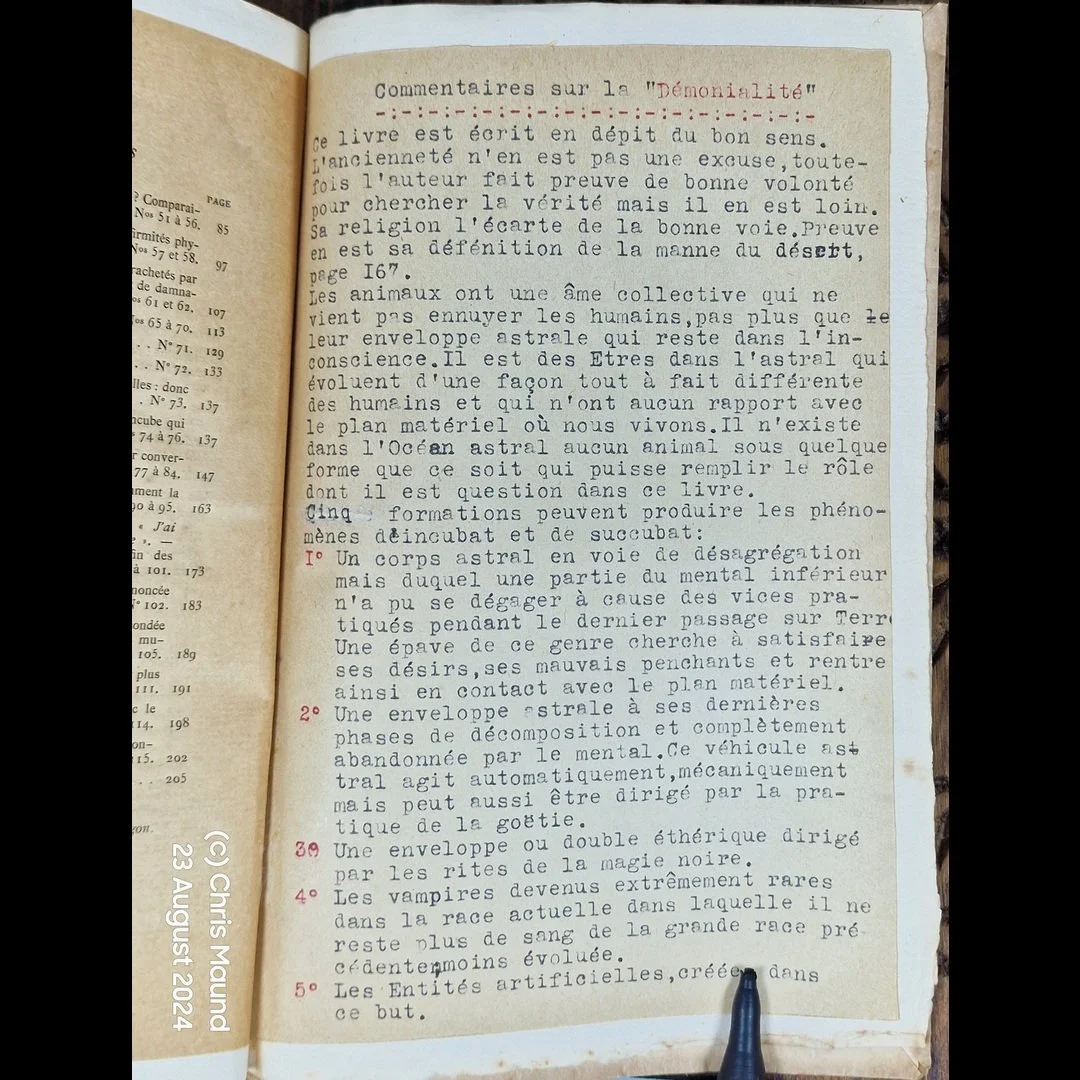 Image 26 of 28
Image 26 of 28

 Image 27 of 28
Image 27 of 28

 Image 28 of 28
Image 28 of 28





























1875 1st Edtn Ltd Edtn 416/598 With Provenance DE LA DÉMONIALITÉ ET DES ANIMAUX INCUBES ET SUCCUBES By Louis-Marie Sinistrari d’Ameno Very Good Esoteric
1875 1st Edition , With Provenance
DE LA DÉMONIALITÉ ET DES ANIMAUX INCUBES ET SUCCUBES
By Louis-Marie Sinistrari d’Ameno
Louis-Marie (Lodovico Maria) Sinistrari d’Ameno (1622–1701)
Italian Franciscan theologian and canonist, born at Ameno (Novara, Piedmont). A friar of the Reformed Observance of St Francis, he taught moral theology in northern Italian houses of study and served as a sought-after confessor and casuist. Sinistrari wrote on crimes, censures, and demonology in a cool, juristic style that drew heavily on Aquinas, canon law and inquisitorial practice.
His most notorious work is the posthumous treatise De daemonialitate et incubis et succubis (“On Demoniality and the Incubi and Succubi”), in which he argues that incubi/succubi are rational corporeal beings and weighs the legal gravity of sexual commerce with them (démonialité) against bestiality and sodomy. The manuscript circulated privately in the 17th century and was first published from the original by the Paris scholar-publisher Isidore Liseux in 1875 (French), with a Latin text issued shortly after. The treatise became a touchstone for the 19th–20th-century occult revival and is frequently cited by Montague Summers and later demonology bibliographers.
Select works (attributed): moral-theology and canon-law tracts on crimes and censures; De daemonialitate… (ms. 17th c.; first printed 1875).
Reputation: An exacting scholastic moralist rather than a sensationalist; his cool legal treatment of a febrile topic explains why this work straddles both theological and occult collecting fields.
Format: Softcover, octavo (8vo 6 × 9 152 × 229),Pages 242
Language: Latin/French
Dust Jacket: No Jacket, Dust Jacket Condition: No Jacket
Published By: Isidor Liseux, Paris
Synopsis: Composed c.17th century by the Franciscan moral theologian Lodovico Maria Sinistrari d’Ameno (1622–1701), this treatise defines the crime of démonialité—sexual commerce with incubi and succubi—and distinguishes it from bestiality and sodomy. Drawing on Aquinas, patristic/canon-law authorities, and case histories, Sinistrari argues that incubi/succubi are rational, corporeal beings capable of generation (hence “animaux” in the title). He treats proofs in law and theology, ceremonies of witches and sorcerers, and notorious examples (Romulus & Remus, Plato, Alexander, Luther), even asserting that the Antichrist will be born of an incubus. The text famously concludes that, juridically considered, démonialité is no graver than bestiality.
This Liseux edition is the princeps—the first appearance from the original manuscript—issued in a limited, numbered printing and much cited by later occult writers (e.g., Montague Summers).
Early private owner’s stamp (fraternal-style star/handshake).
SKU: BTETM0002443
Approximate Package Dimensions H: 12.5, L: 30, W: 25 (Units: cm), W: 2Kg
1875 1st Edition , With Provenance
DE LA DÉMONIALITÉ ET DES ANIMAUX INCUBES ET SUCCUBES
By Louis-Marie Sinistrari d’Ameno
Louis-Marie (Lodovico Maria) Sinistrari d’Ameno (1622–1701)
Italian Franciscan theologian and canonist, born at Ameno (Novara, Piedmont). A friar of the Reformed Observance of St Francis, he taught moral theology in northern Italian houses of study and served as a sought-after confessor and casuist. Sinistrari wrote on crimes, censures, and demonology in a cool, juristic style that drew heavily on Aquinas, canon law and inquisitorial practice.
His most notorious work is the posthumous treatise De daemonialitate et incubis et succubis (“On Demoniality and the Incubi and Succubi”), in which he argues that incubi/succubi are rational corporeal beings and weighs the legal gravity of sexual commerce with them (démonialité) against bestiality and sodomy. The manuscript circulated privately in the 17th century and was first published from the original by the Paris scholar-publisher Isidore Liseux in 1875 (French), with a Latin text issued shortly after. The treatise became a touchstone for the 19th–20th-century occult revival and is frequently cited by Montague Summers and later demonology bibliographers.
Select works (attributed): moral-theology and canon-law tracts on crimes and censures; De daemonialitate… (ms. 17th c.; first printed 1875).
Reputation: An exacting scholastic moralist rather than a sensationalist; his cool legal treatment of a febrile topic explains why this work straddles both theological and occult collecting fields.
Format: Softcover, octavo (8vo 6 × 9 152 × 229),Pages 242
Language: Latin/French
Dust Jacket: No Jacket, Dust Jacket Condition: No Jacket
Published By: Isidor Liseux, Paris
Synopsis: Composed c.17th century by the Franciscan moral theologian Lodovico Maria Sinistrari d’Ameno (1622–1701), this treatise defines the crime of démonialité—sexual commerce with incubi and succubi—and distinguishes it from bestiality and sodomy. Drawing on Aquinas, patristic/canon-law authorities, and case histories, Sinistrari argues that incubi/succubi are rational, corporeal beings capable of generation (hence “animaux” in the title). He treats proofs in law and theology, ceremonies of witches and sorcerers, and notorious examples (Romulus & Remus, Plato, Alexander, Luther), even asserting that the Antichrist will be born of an incubus. The text famously concludes that, juridically considered, démonialité is no graver than bestiality.
This Liseux edition is the princeps—the first appearance from the original manuscript—issued in a limited, numbered printing and much cited by later occult writers (e.g., Montague Summers).
Early private owner’s stamp (fraternal-style star/handshake).
SKU: BTETM0002443
Approximate Package Dimensions H: 12.5, L: 30, W: 25 (Units: cm), W: 2Kg
Very Good - Later boards (cloth-backed) preserving the original printed wrappers (red/black); spine neatly covered. Clean, square text-block; mild edge-toning and the odd fox mark; small old tide mark confined to a few outer margins; wrappers well preserved; edges unopened in places. Early typed French “Commentaires” leaf tipped in. Owner’s stamp (star over handshake device) to front endpaper. Please see photos as part of condition report






